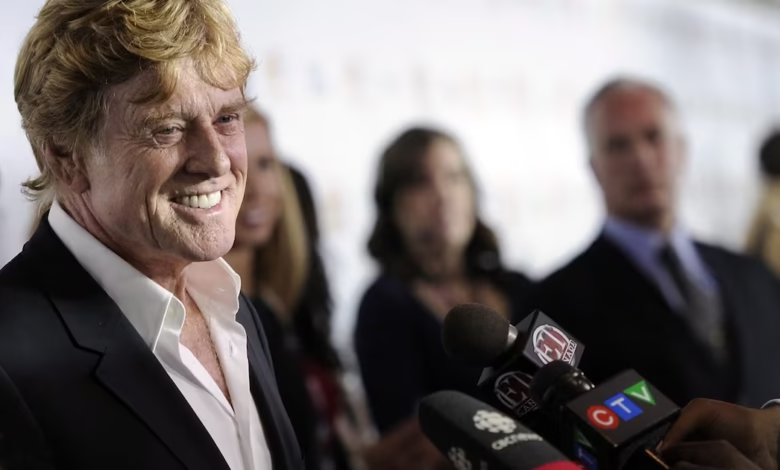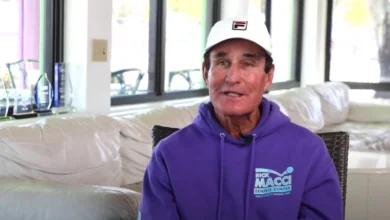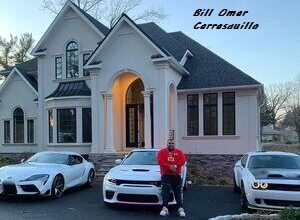Robert Redford: A Legendary Icon of Film and Activism

When you think of classic Hollywood charm, incredible acting talent, and a deep commitment to storytelling, Robert Redford is one of the first names that comes to mind. For decades, he’s been a beloved figure in the entertainment industry, earning admiration not just for his performances but also for his contributions as a director, producer, and environmental activist. Redford’s career is a masterclass in longevity and reinvention, and his personal story is as fascinating as the characters he’s portrayed.
In this article, we’ll take a deep dive into Redford’s journey — from his early struggles to his rise as a Hollywood superstar, and how he used his fame to make a difference in the world. Robert Redford Whether you know him as the star of Butch Cassidy and the Sundance Kid or the founder of the iconic Sundance Film Festival, there’s no denying that Robert Redford’s impact is legendary.
Early Life and Humble Beginnings

Robert Redford was born Charles Robert Redford Jr. on August 18, 1936, in Santa Monica, California. Despite his glamorous image today, his early life was far from Hollywood luxury. Redford grew up in a working-class household during the tail end of the Great Depression, which shaped his outlook on life and his respect for hard work.
His early years were a mix of challenges and creativity. Robert Redford was a talented artist and athlete but also struggled with academics. After losing his mother at a young age, he faced a period of rebellion and uncertainty. In fact, he has openly shared that he felt somewhat lost as a teenager, which led to him briefly traveling and seeking inspiration outside traditional paths.
This period of exploration turned out to be pivotal. Robert Redford He attended the University of Colorado for a short time before deciding to pursue art more seriously, which took him to Europe. It was there that he discovered a love for storytelling and performance — a spark that would lead him back to the United States to study at the American Academy of Dramatic Arts in New York City.
Breakthrough in Hollywood
Redford’s journey to stardom wasn’t overnight. Robert Redford He started with small roles on television in the late 1950s and early 1960s, appearing in shows like Maverick and The Twilight Zone. His good looks and natural charisma quickly caught the attention of producers, but Redford wasn’t just another pretty face — he wanted to be taken seriously as an actor.
His big break came with the Broadway production of Barefoot in the Park, a role that perfectly showcased his talent for blending charm with emotional depth. Robert Redford Hollywood soon came calling, and Redford made the leap to film. His early movies, such as Inside Daisy Clover (1965) and This Property Is Condemned (1966), helped him gain credibility as a rising star.
However, it was Butch Cassidy and the Sundance Kid (1969), alongside Paul Newman, that turned him into a bona fide superstar. The film was a massive box-office hit and cemented Redford as one of the most bankable leading men of the era. Robert Redford Following that success, he starred in several critically acclaimed films throughout the 1970s, including The Sting, All the President’s Men, and Three Days of the Condor. Each role displayed his versatility and commitment to quality storytelling.
Directing and the Birth of Sundance
Redford’s ambitions extended beyond acting. Robert Redford By the late 1970s, he was ready to try his hand at directing. His directorial debut, Ordinary People (1980), was nothing short of a triumph. The film, a deeply emotional family drama, won four Academy Awards, including Best Picture and Best Director for Redford. This success established him as a serious filmmaker with a unique voice.
But perhaps his most lasting contribution to cinema was the founding of the Sundance Film Festival. What began as a small event in Utah to support independent filmmakers grew into one of the most influential film festivals in the world. Redford wanted to create a space where creative, unconventional films could thrive outside of the Hollywood studio system — and that’s exactly what Sundance became.
Through Sundance, Redford has nurtured generations of filmmakers and helped bring countless independent films to wider audiences. His commitment to supporting emerging talent and giving them a platform is one of the most important aspects of his legacy.
Activism and Environmental Advocacy
Beyond film, Robert Redford has been a vocal advocate for environmental issues for decades. Long before climate change became a mainstream conversation, Redford was using his platform to raise awareness about conservation and sustainability. He has worked closely with organizations such as the Natural Resources Defense Council (NRDC) and has consistently spoken out on issues related to clean energy, protecting public lands, and combating climate change.
His activism isn’t just lip service — Redford has been actively involved in policy discussions and campaigns, lending his voice and influence to important causes. He believes that storytelling can be a powerful tool for change, which is why many of his projects, both as an actor and a director, touch on themes of justice, truth, and social responsibility.
In 2009, President Barack Obama awarded him the National Medal of Arts, recognizing not just his contributions to entertainment but also his dedication to advocacy. This honor cemented his status as not only a Hollywood icon but also a respected public figure and humanitarian.
Legacy and Influence
Robert Redford’s impact on Hollywood and beyond is immeasurable. As an actor, he redefined what it meant to be a leading man, combining good looks with substance and intelligence. As a director and producer, he pushed boundaries and told stories that mattered. And as the founder of Sundance, he changed the landscape of independent cinema forever.
Even in the later stages of his career, Redford continued to deliver powerful performances in films like The Old Man & the Gun (2018), which he announced would be his final acting role. His decision to step back from acting doesn’t mean he’s done influencing the world of film — Sundance and his other projects continue to thrive.
Young filmmakers, actors, and activists often cite Redford as a source of inspiration, proving that his influence goes far beyond the screen. His commitment to art, truth, and the environment serves as a reminder that celebrity can be a tool for positive change.
Conclusion
Robert Redford is more than just a Hollywood star — he’s a storyteller, an innovator, and a changemaker. From his early struggles to his rise as a leading man, from directing Oscar-winning films to creating a platform for independent voices, his career is nothing short of extraordinary.
His work has shaped not only the entertainment industry but also conversations about culture, politics, and the environment. For fans and aspiring creatives, Redford represents the best of what Hollywood can be: meaningful, impactful, and enduring.
In a world where fame often fades quickly, Robert Redford has stood the test of time — and his legacy will continue to inspire for generations to come.



